A Designed Vessel Using Dissolvable Polyvinyl Alcohol Membrane as Automatic Valve to Couple LAMP with CRISPR/Cas12a System for Visual Detection
Abstract
1. Introduction
2. Materials and Methods
2.1. Material
2.2. LAMP Reaction Process
2.3. CRISPR Reaction Procedure
2.4. Preparation of PVA Membranes
2.5. A Device to Measure the Dissolution Time of PVA Membranes
2.6. A Dedicated Vessel for the LAMP-CRISPR Reaction
3. Results and Discussion
3.1. LAMP Reaction for Detection of VP
3.2. CRISPR/Cas12a Reaction for Detection of VP
3.3. Investigation of Solubility Characteristics of PVA Membranes
3.4. LAMP-CRISPR Application for VP Testing
4. Conclusions
Author Contributions
Funding
Institutional Review Board Statement
Informed Consent Statement
Data Availability Statement
Conflicts of Interest
References
- Torgerson, P.R.; Devleesschauwer, B.; Praet, N.; Speybroeck, N.; Willingham, A.L.; Kasuga, F.; Rokni, M.B.; Zhou, X.N.; Fèvre, E.M.; Sripa, B.; et al. World Health Organization Estimates of the Global and Regional Disease Burden of 11 Foodborne Parasitic Diseases, 2010: A Data Synthesis. PLoS Med. 2015, 12, e1001920. [Google Scholar] [CrossRef] [PubMed]
- Lee, H.; Yoon, Y. Etiological agents implicated in foodborne illness world wide. Food Sci. Anim. Resour. 2021, 41, 1–7. [Google Scholar] [CrossRef] [PubMed]
- Anupama, K.P.; Chakraborty, A.; Karunasagar, I.; Karunasagar, I.; Maiti, B. Loop-mediated isothermal amplification assay as a point-of-care diagnostic tool for Vibrio parahaemolyticus: Recent developments and improvements. Expert Rev. Mol. Diagn. 2019, 19, 229–239. [Google Scholar] [CrossRef] [PubMed]
- Letchumanan, V.; Chan, K.G.; Lee, L.H. Vibrio parahaemolyticus: A review on the pathogenesis, prevalence, and advance molecular identification techniques. Front. Microbiol. 2014, 5, 705. [Google Scholar] [CrossRef]
- Elmahdi, S.; Dasilva, L.V.; Parveen, S. Antibiotic resistance of Vibrio parahaemolyticus and Vibrio vulnificus in various countries: A review. Food Microbiol. 2016, 57, 128–134. [Google Scholar] [CrossRef]
- Wei, S.; Zhao, H.; Xian, Y.; Hussain, M.A.; Wu, X. Multiplex PCR assays for the detection of Vibrio alginolyticus, Vibrio parahaemolyticus, Vibrio vulnificus, and Vibrio cholerae with an internal amplification control. Diagn. Microbiol. Infect. Dis. 2014, 79, 115–118. [Google Scholar] [CrossRef]
- Yamazaki, W.; Ishibashi, M.; Kawahara, R.; Inoue, K. Development of a loop-mediated Isothermal amplification assay for sensitive and rapid detection of Vibrio parahaemolyticus. BMC Microbiol. 2008, 8, 163. [Google Scholar] [CrossRef]
- Zhao, Y.; Tang, X.; Zhan, W. Cloning, Expressing, and Hemolysis of tdh, trh and tlh Genes of Vibrio parahaemolyticus. J. Ocean Univ. China 2011, 10, 275–279. [Google Scholar] [CrossRef]
- Barrangou, R.; Fremaux, C.; Deveau, H.; Richards, M.; Boyaval, P.; Moineau, S.; Romero, D.A.; Horvath, P. CRISPR Provides Acquired Resistance Against Viruses in Prokaryotes. Sci. (Am. Assoc. Adv. Sci.) 2007, 315, 1709–1712. [Google Scholar] [CrossRef]
- Marraffini, L.A.; Sontheimer, E.J. CRISPR Interference Limits Horizontal Gene Transfer in Staphylococci by Targeting DNA. Sci. (Am. Assoc. Adv. Sci.) 2008, 322, 1843–1845. [Google Scholar] [CrossRef]
- Pickar-Oliver, A.; Gersbach, C.A. The next generation of CRISPR–Cas technologies and applications. Nature reviews. Mol. Cell Biol. 2019, 20, 490–507. [Google Scholar]
- Zetsche, B.; Gootenberg, J.S.; Abudayyeh, O.O.; Slaymaker, I.M.; Makarova, K.S.; Essletzbichler, P.; Volz, S.E.; Joung, J.; Van Der Oost, J.; Regev, A.; et al. Cpf1 Is a Single RNA-Guided Endonuclease of a Class 2 CRISPR-Cas System. Cell 2015, 163, 759–771. [Google Scholar] [CrossRef]
- Chen, J.S.; Ma, E.; Harrington, L.B.; Da Costa, M.; Tian, X.; Palefsky, J.M.; Doudna, J.A. CRISPR-Cas12a target binding unleashes indiscriminate single-stranded DNase activity. Sci. (Am. Assoc. Adv. Sci.) 2018, 360, 436–439. [Google Scholar] [CrossRef]
- Zhang, T.; Zhao, W.; Zhao, W.; Si, Y.; Chen, N.; Chen, X.; Zhang, X.; Fan, L.; Sui, G. Universally Stable and Precise CRISPR-LAMP Detection Platform for Precise Multiple Respiratory Tract Virus Diagnosis Including Mutant SARS-CoV 2 Spike N501Y. Anal. Chem. 2021, 93, 16184–16193. [Google Scholar] [CrossRef]
- Wu, H.; Qian, S.; Peng, C.; Wang, X.; Wang, T.; Zhong, X.; Chen, Y.; Yang, Q.; Xu, J.; Wu, J. Rotary Valve-Assisted Fluidic System Coupling with CRISPR/Cas12a for Fully Integrated Nucleic Acid Detection. ACS Sens. 2021, 6, 4048–4056. [Google Scholar] [CrossRef]
- Wu, H.; He, J.; Zhang, F.; Ping, J.; Wu, J. Contamination-free visual detection of CaMV35S promoter amplicons using CRISPR/Cas12a coupled with a designed reaction vessel: Rapid, specific and sensitive. Anal. Chim. Acta 2020, 1096, 130–137. [Google Scholar] [CrossRef]
- Ben Halima, N. Poly(vinyl alcohol): Review of its promising applications and insights into biodegradation. RSC Adv. 2016, 6, 39823–39832. [Google Scholar] [CrossRef]
- Hassan, C.; Trakarnpan, P.; Peppas, N. Water Solubility Characteristics of Poly(Vinyl Alcohol) and Gels Prepared by Freezing/Thawing Processes; Plenum Press Div Plenum Publishing Corp.: New York, NY, USA, 1998. [Google Scholar]
- Chan, L.W.; Hao, J.S.; Heng, P.W.S. Evaluation of Permeability and Mechanical Properties of Composite Polyvinyl Alcohol membranes. Chem. Pharm. Bull. 1999, 47, 1412–1416. [Google Scholar] [CrossRef]
- Xiang, A.; Lv, C.; Zhou, H. Changes in Crystallization Behaviors of Poly(Vinyl Alcohol) Induced by Water Content. J. Vinyl Addit. Technol. 2020, 26, 613–622. [Google Scholar] [CrossRef]
- Liu, H.; Hu, S.; Chen, Y.; Chen, S. Characterization and drug release behavior of highly responsive chip-like electrically modulated reduced graphene oxide-poly(vinyl alcohol) membranes. J. Mater. Chem. 2012, 22, 17311–17320. [Google Scholar] [CrossRef]
- Lenk, G.; Stemme, G.; Roxhed, N. IEEE. Dry Reagent Storage in Dissolvable Membranes and Liquid Triggered Release for Programmed Multi-Step Lab-on-Chip Diagnostics; IEEE: New York, NY, USA, 2015. [Google Scholar]
- Li, Q.; Chen, F.J. Humidity Sensor Chips Based on Gold Nanoparticles/PVA/Carbon Black Composite Membrane; Trans Tech Publications Ltd.: Stafa-Zurich, Switzerland, 2012. [Google Scholar]
- Harpaz, D.; Axelrod, T.; Yitian, A.L.; Eltzov, E.; Marks, R.S.; Tok, A.I.Y. Dissolvable polyvinyl-alcohol membrane, a time-barrier to modulate sample flow in a 3D-printed holder for capillary flow paper diagnostics. Materials 2019, 12, 343. [Google Scholar] [CrossRef] [PubMed]
- Qian, W.; Meng, Y.; Lu, Y.; Wu, C.; Wang, R.; Wang, L.; Qian, C.; Ye, Z.; Wu, J.; Ying, Y. Rapid, Sensitive, and Carryover Contamination-Free Loop-Mediated Isothermal Amplification-Coupled Visual Detection Method for ‘Candidatus Liberibacter asiaticus’. J. Agric. Food Chem. 2017, 65, 8302–8310. [Google Scholar] [CrossRef] [PubMed]
- Qian, C.; Wang, R.; Wu, C.; Wang, L.; Ye, Z.; Wu, J.; Ji, F. A fast and visual method for duplex shrimp pathogens detection with high specificity using rapid PCR and molecular beacon. Anal. Chim. Acta 2018, 1040, 105–111. [Google Scholar] [CrossRef] [PubMed]
- Prompamorn, P.; Sithigorngul, P.; Rukpratanporn, S.; Longyant, S.; Sridulyakul, P.; Chaivisuthangkura, P. The development of loop-mediated isothermal amplification combined with lateral flow dipstick for detection of Vibrio parahaemolyticus: Detection of V. parahaemolyticus by LAMP-LFD. Lett. Appl. Microbiol. 2011, 52, 344–351. [Google Scholar] [CrossRef]
- Kaufman, G.E.; Blackstone, G.M.; Vickery, M.C.; Bej, A.K.; Bowers, J.; Bowen, M.D.; Meyer, R.F.; DePaola, A. Real-time PCR quantification of Vibrio parahaemolyticus in oysters using an alternative matrix. J. Food Prot. 2004, 67, 2424–2429. [Google Scholar] [CrossRef]
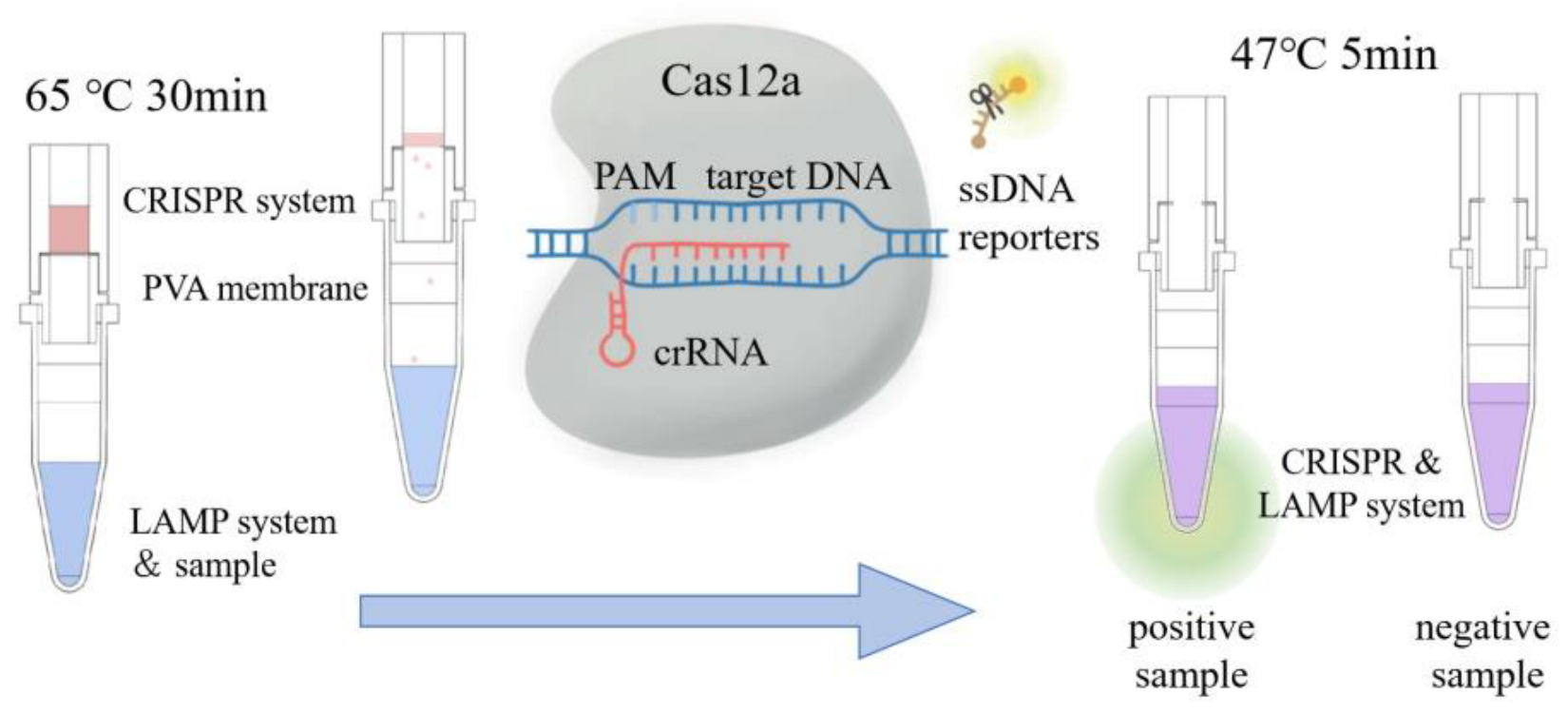
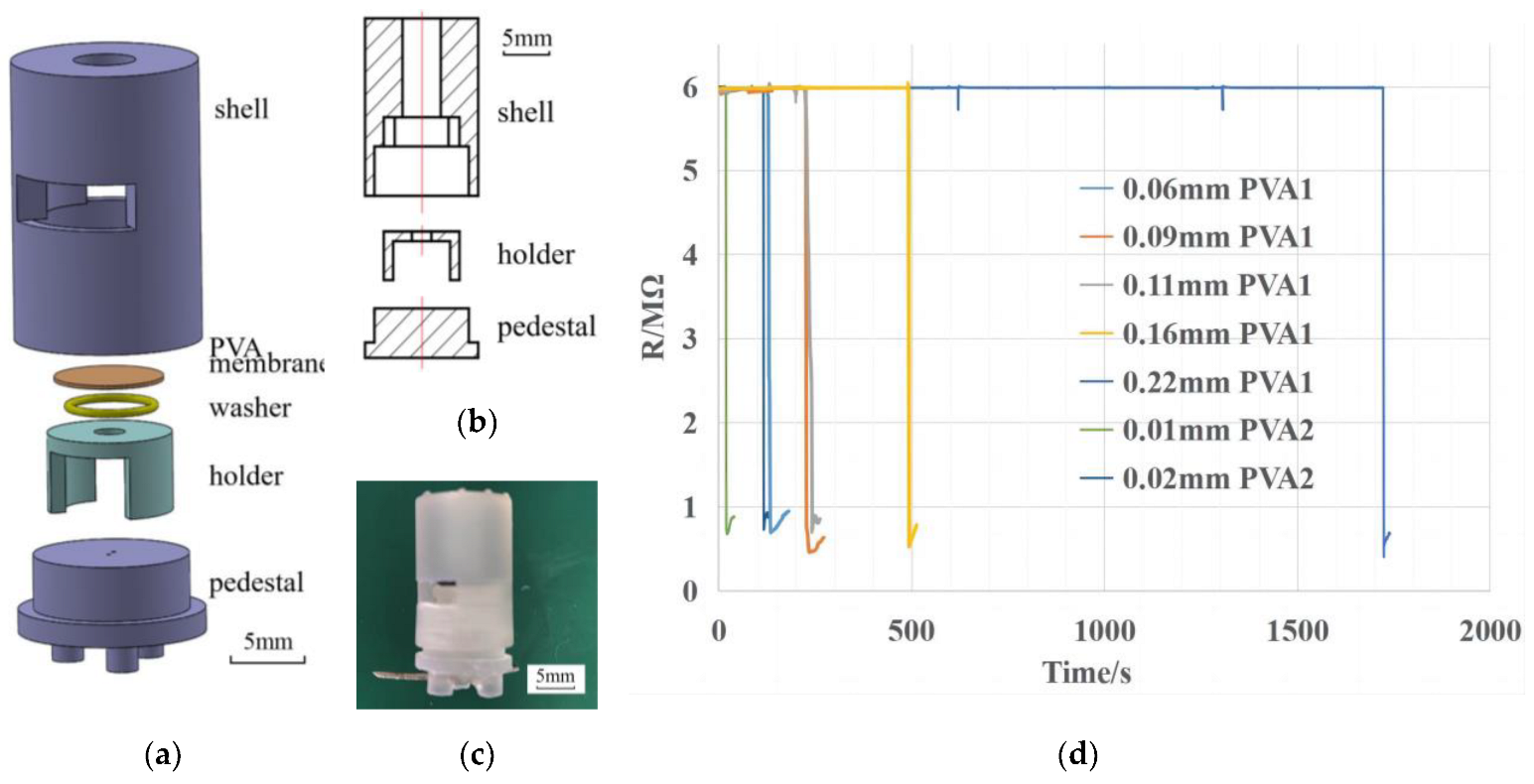
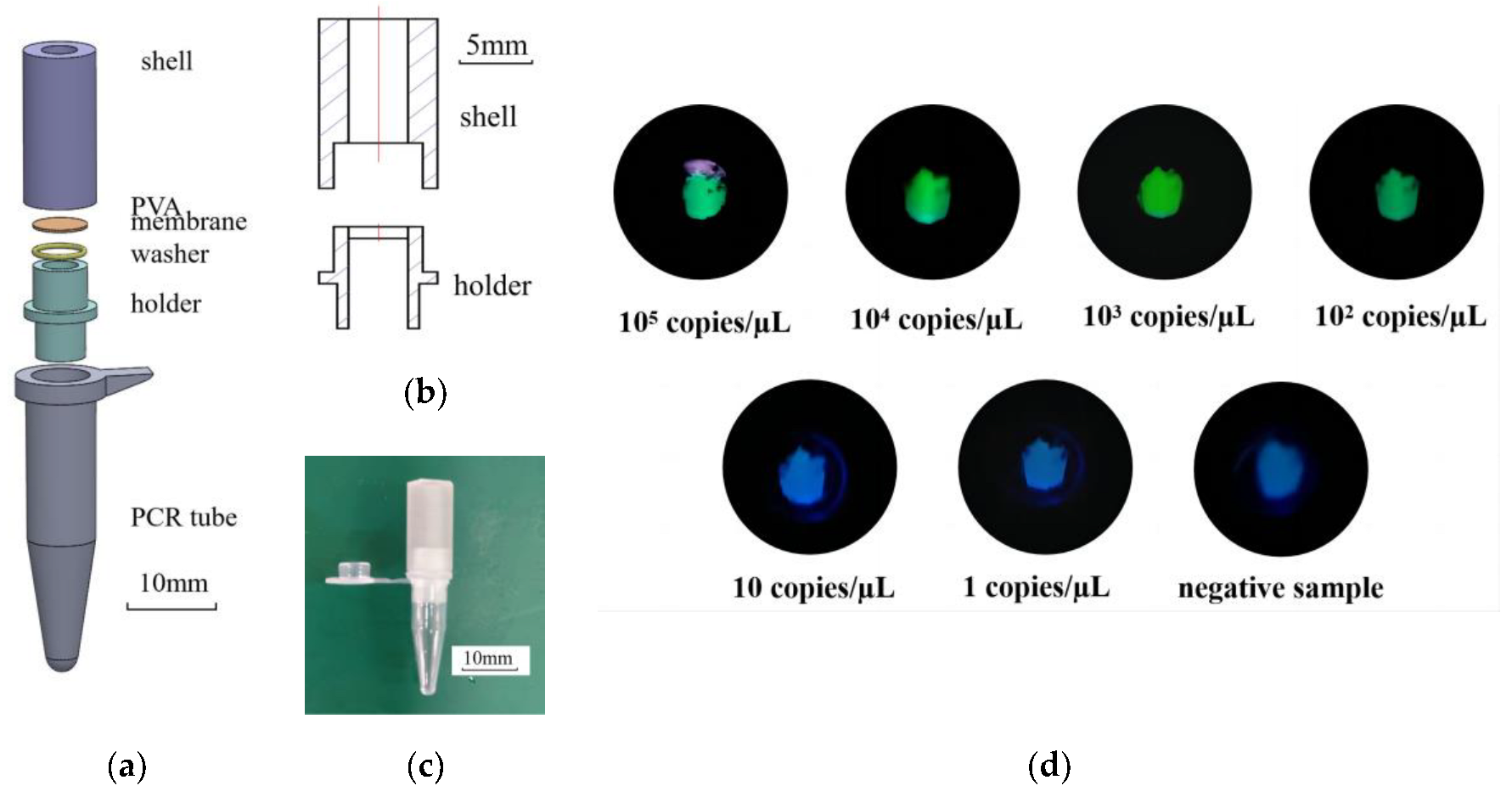
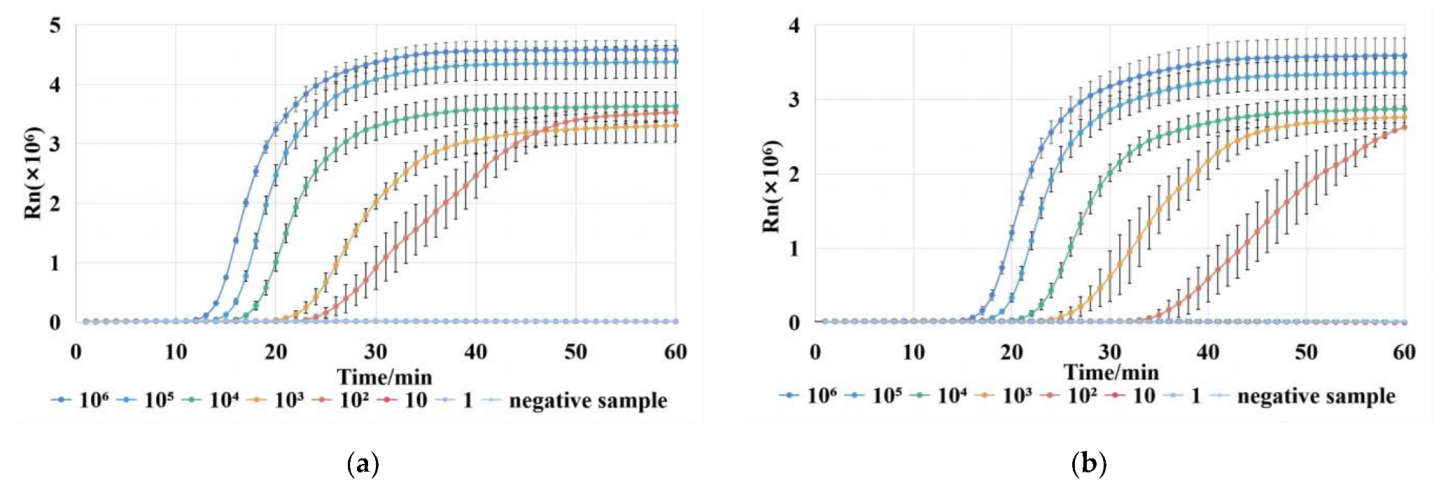
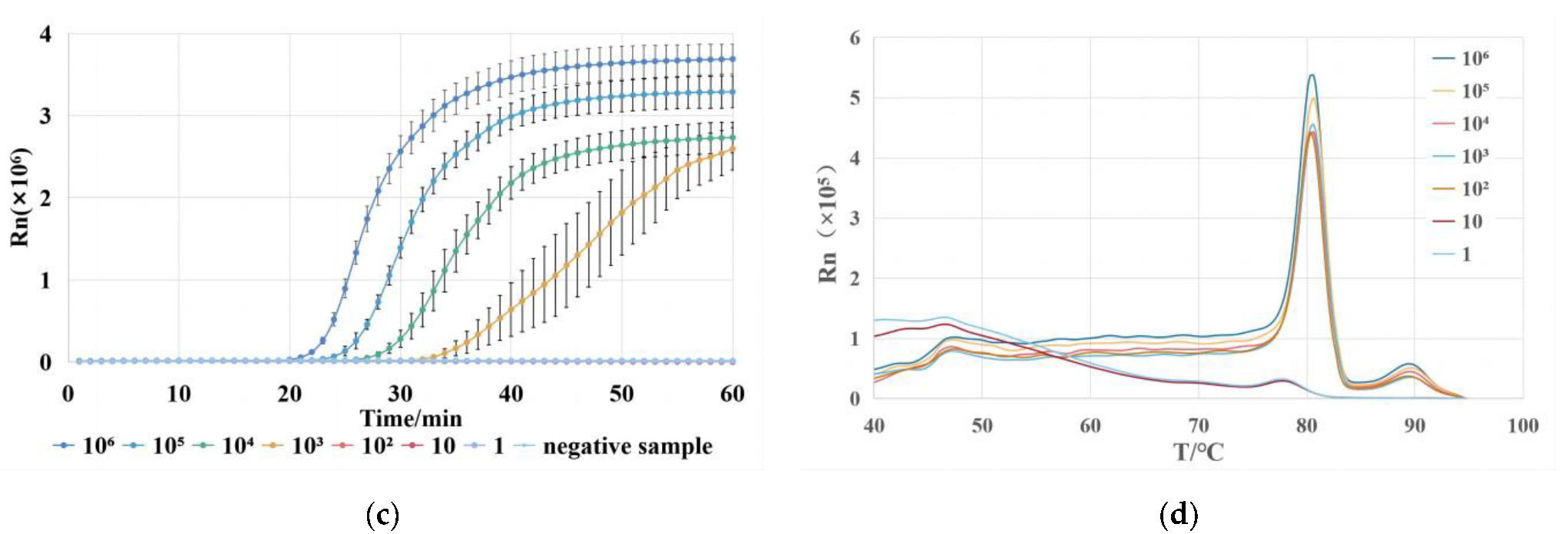
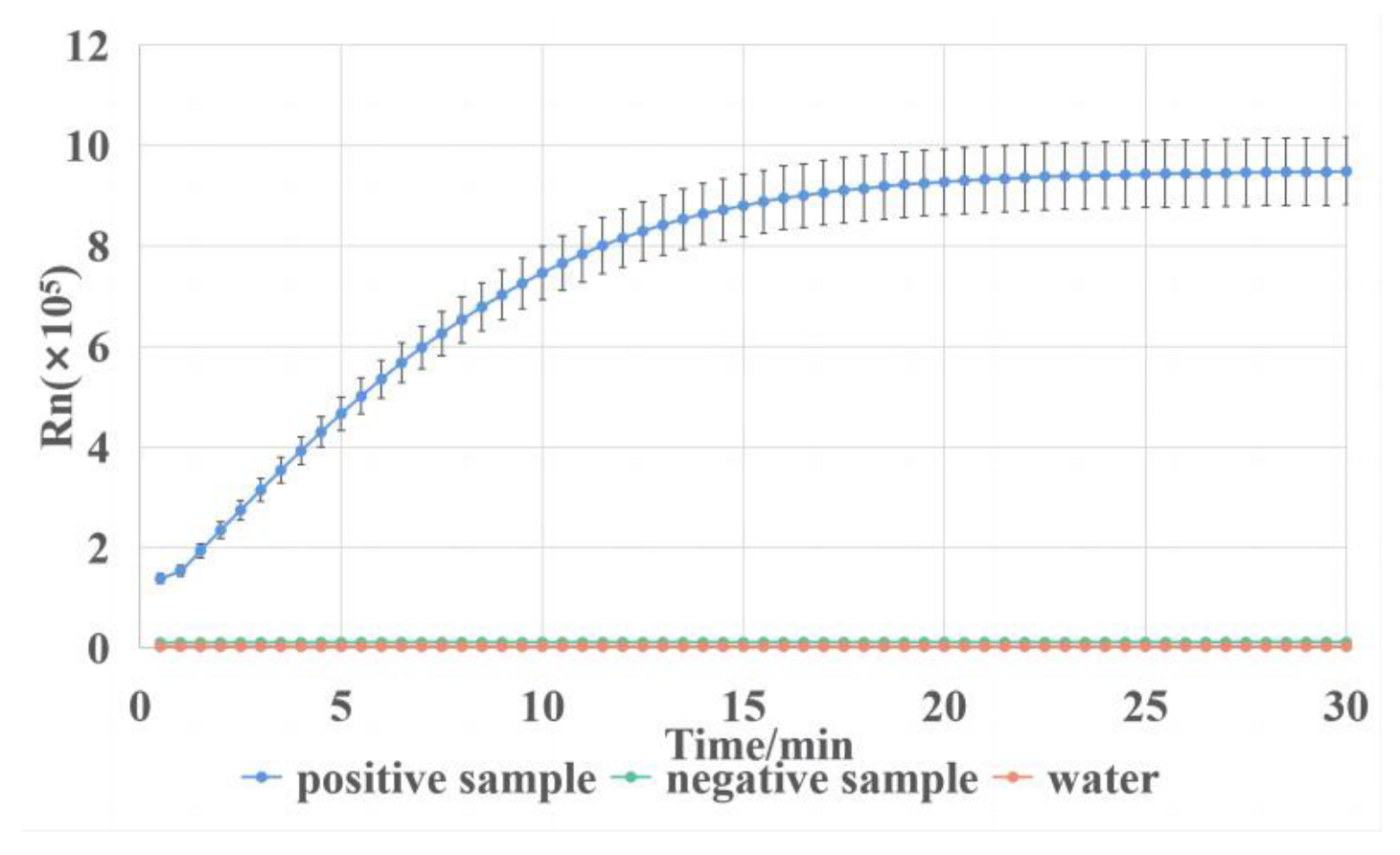
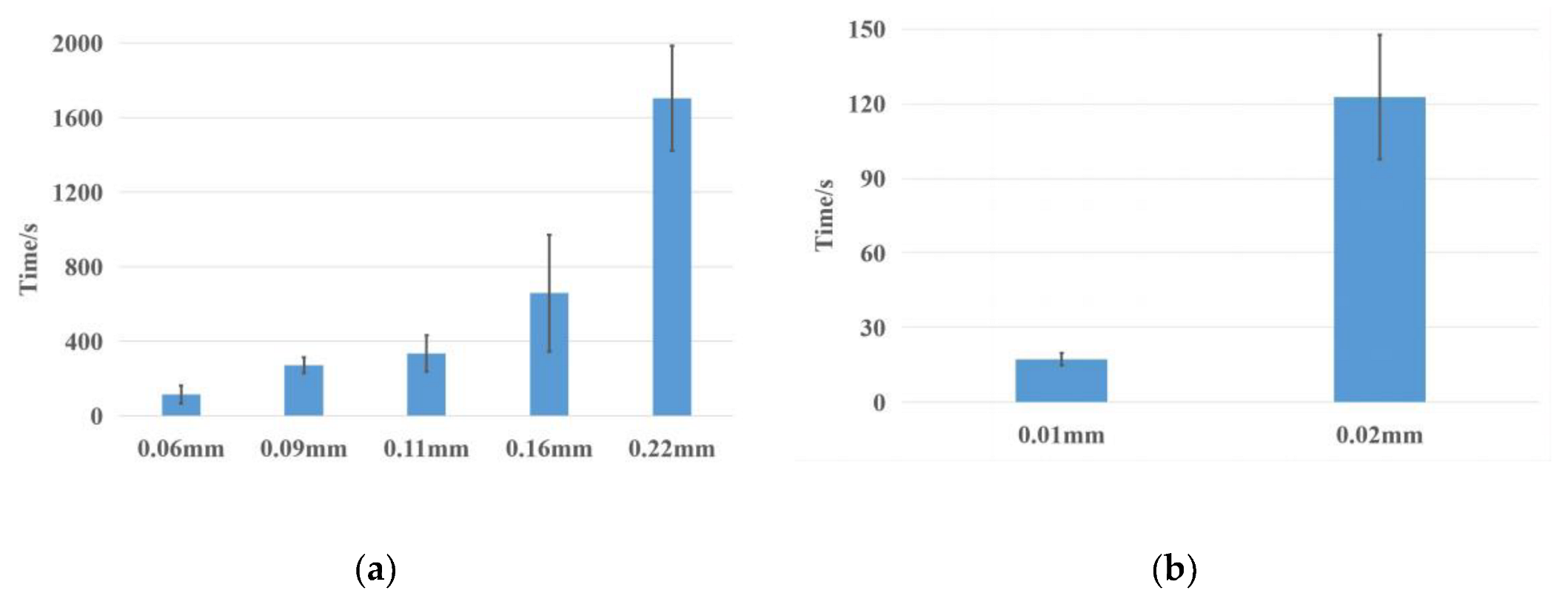
| Category | Primer | Primer Sequences (5′to3′) |
|---|---|---|
| The first set of primers used in LAMP assay | TLH1-F3 | ATCGCACCAGCTACTCGA |
| TLH1-B3 | CGGCGAAGAACGTAATGTCT | |
| TLH1-FIP | CCACCAGTAGCCGTCAATGGTGAAGATGATCCAGCGACCGAT | |
| TLH1-BIP | ACACCAACACGTCGCAAAACGGCGTTCTCGTTCGCCAAAT | |
| TLH1-LF | TCGTTTTTTGCCCATTCCCA | |
| TLH1-LB | TTATCCGTCAGCGTTGTGAAGC | |
| The second set of primers used in LAMP assay | TLH2-F3 | TCGTACTTAACCTACGCAA |
| TLH2-B3 | TGAGTACTTAAACTGAGGCG | |
| TLH2-FIP | CGGTTGTAGTTCATGAAGTCATTCAACTGGCGAAGAACTACAAAC | |
| TLH2-BIP | GTTCCAGAAGTGAAAGCGGATTATCAGTGTCATCAACATGAAGTT | |
| TLH2-LF | GCGTAAACAAGGTGTTTGCTG | |
| TLH2-LB | AGCACTGATTCGTTTGACGGA | |
| The third set of primers used in LAMP assay | TLH3-F3 | CCGAAGAGCACGGTTTCG |
| TLH3-B3 | CGGTACTCGGCTAAGTTGTT | |
| TLH3-FIP | CGCAATGCGTGGGTGTACATGTTGAACGCGAGCGATCCTT | |
| TLH3-BIP | GTGTGCAGCGTCTGGTGCTGCTGCAACATAGCGGTGAGT | |
| TLH3-LF | CGATGAGCGGTTGATGTCCA | |
| TLH3-LB | GAAGTTTGTGTTCTGGAATGTCAC | |
| crRNA used in CRISPR/Cas12a | TLH1-crRNA | UAAUUUCUACUGUUGUAGAUAAUGAAACGGAGCUCCACCAG |
Disclaimer/Publisher’s Note: The statements, opinions and data contained in all publications are solely those of the individual author(s) and contributor(s) and not of MDPI and/or the editor(s). MDPI and/or the editor(s) disclaim responsibility for any injury to people or property resulting from any ideas, methods, instructions or products referred to in the content. |
© 2023 by the authors. Licensee MDPI, Basel, Switzerland. This article is an open access article distributed under the terms and conditions of the Creative Commons Attribution (CC BY) license (https://creativecommons.org/licenses/by/4.0/).
Share and Cite
Yang, T.; Chen, Y.; He, J.; Wu, J.; Wang, M.; Zhong, X. A Designed Vessel Using Dissolvable Polyvinyl Alcohol Membrane as Automatic Valve to Couple LAMP with CRISPR/Cas12a System for Visual Detection. Biosensors 2023, 13, 111. https://doi.org/10.3390/bios13010111
Yang T, Chen Y, He J, Wu J, Wang M, Zhong X. A Designed Vessel Using Dissolvable Polyvinyl Alcohol Membrane as Automatic Valve to Couple LAMP with CRISPR/Cas12a System for Visual Detection. Biosensors. 2023; 13(1):111. https://doi.org/10.3390/bios13010111
Chicago/Turabian StyleYang, Tianyi, Yanju Chen, Jinsong He, Jian Wu, Meixia Wang, and Xiaoping Zhong. 2023. "A Designed Vessel Using Dissolvable Polyvinyl Alcohol Membrane as Automatic Valve to Couple LAMP with CRISPR/Cas12a System for Visual Detection" Biosensors 13, no. 1: 111. https://doi.org/10.3390/bios13010111
APA StyleYang, T., Chen, Y., He, J., Wu, J., Wang, M., & Zhong, X. (2023). A Designed Vessel Using Dissolvable Polyvinyl Alcohol Membrane as Automatic Valve to Couple LAMP with CRISPR/Cas12a System for Visual Detection. Biosensors, 13(1), 111. https://doi.org/10.3390/bios13010111





